Ridin’ Purty: The weird and wonderful world of Columbus ‘art cars’
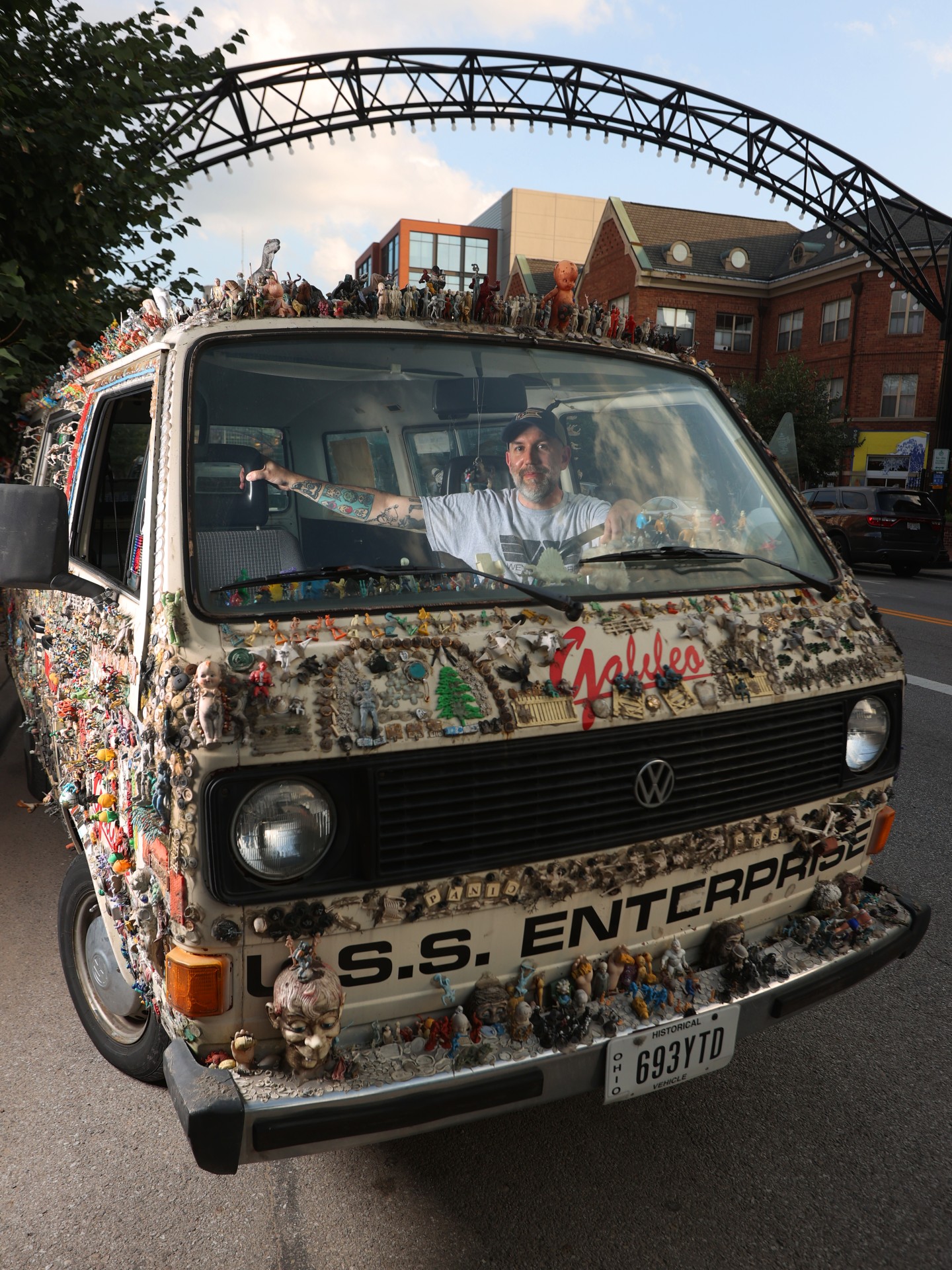
Americans have a love affair with cars. Usually, though, the furthest we dare to go with automotive self-expression is make, model, and color. But for art car drivers, self-expression goes beyond that—way beyond.
“The thing about an art car that’s different than any other art form is that most other art forms, you make the art and that’s it,” said Greg Phelps, a local art car owner. “You exhibit it, or you hang it on the wall, or it’s a vase that you use. But an art car is, I think, more about the experience of interacting with people, seeing it on the road, and not necessarily the art itself.”
Art cars come in different styles, ranging from basic sticker cars (often an entry point) to elaborate sculptural cars, painted cars, and glued cars. And, like their owners, each art car is unique. Some are covered in toys; some, wine corks, some, hand-painted flowers. Some make a social statement; some are solely self-expression. Some are organic, eternal works-in-progress; some are tightly themed and finished in a single week. The sky’s the limit, as long as nobody’s safety is compromised and you can still open your doors.
The car itself is usually only the vehicle (sorry) for the artwork. After all, its lines and base coat will likely be obscured by something much more interesting. The most important question is, how long will it run? Because owners hate to part with their art.
Maybe the most amazing thing about art cars, though, is that most of them are daily drivers. These aren’t cars that get pulled out of the garage for parades and sunny days. These are their owners’ main transportation, rain or shine or sleet.
BROUGHT TO YOU BY
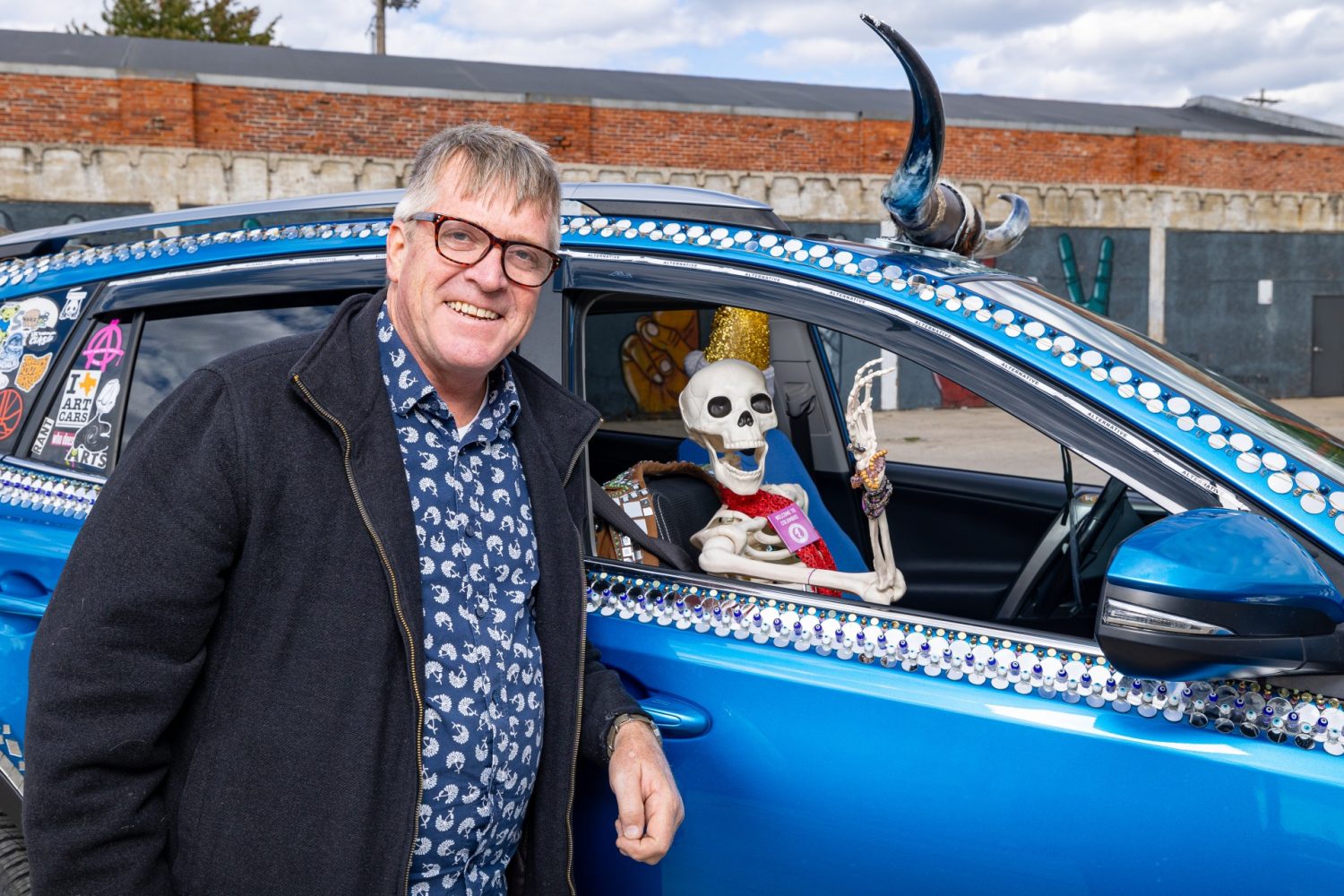
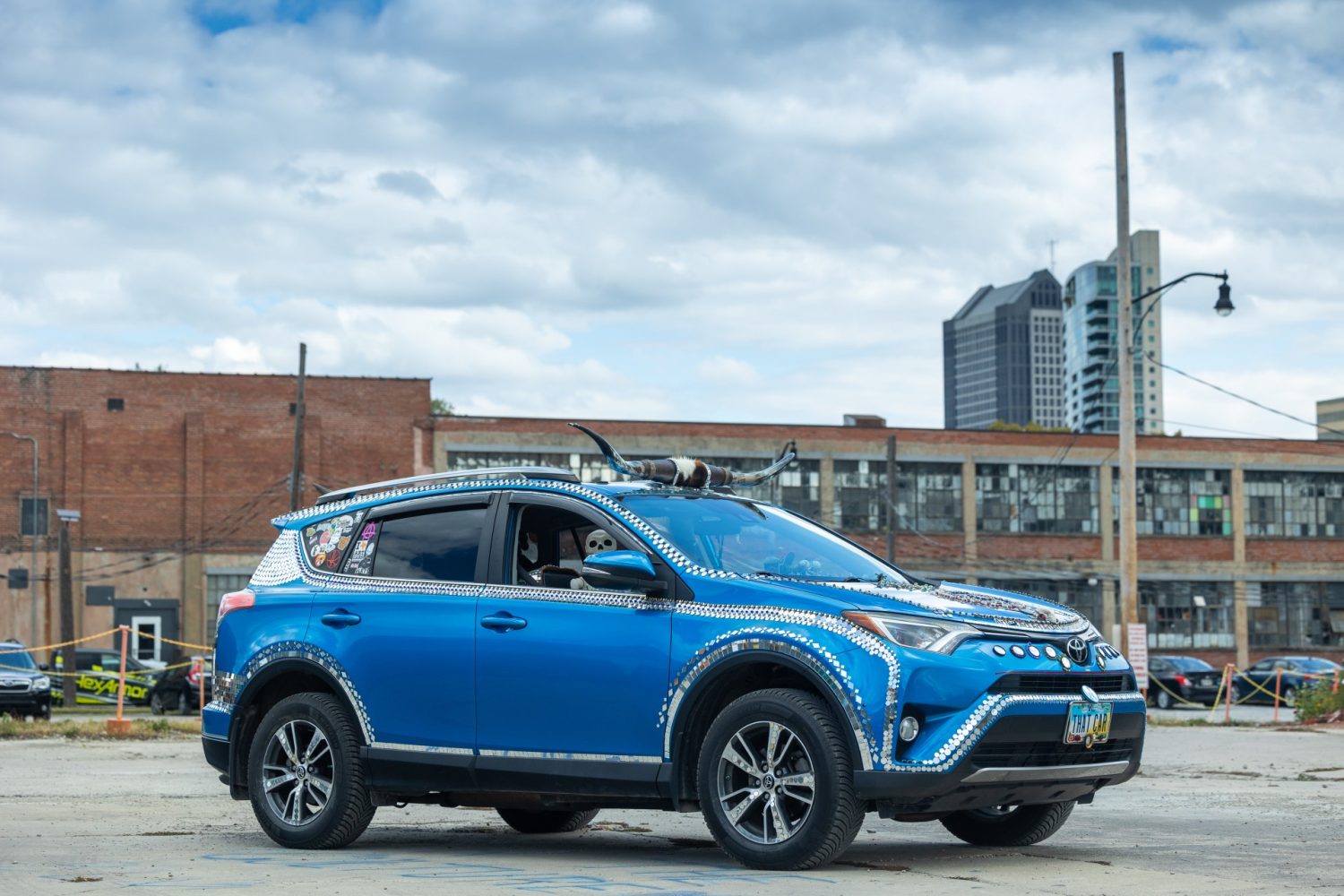
“When there’s snow on it, I do sort of feel like Pig Pen on Snoopy,” Phelps admitted. “Pig Pen has all this dust around. When you get on the highway, the snow blows off, because you can’t brush it off, right?”
But wait – how does all that regalia not blow off in the first place? Three words: exterior silicone caulk. Larger items might need to be bolted to body panels, but silicone caulk is so tough that it takes power tools to remove it—so you’d better be sure your decorations are in exactly the right place.
Not that it doesn’t suffer a little wear and tear. Suzie Simpson, whose car is covered with thrift-store dolls and musical toys, points out her “cancer patients and amputees” when they lose their hair and limbs. “It’s just like life,” she said with a smile.
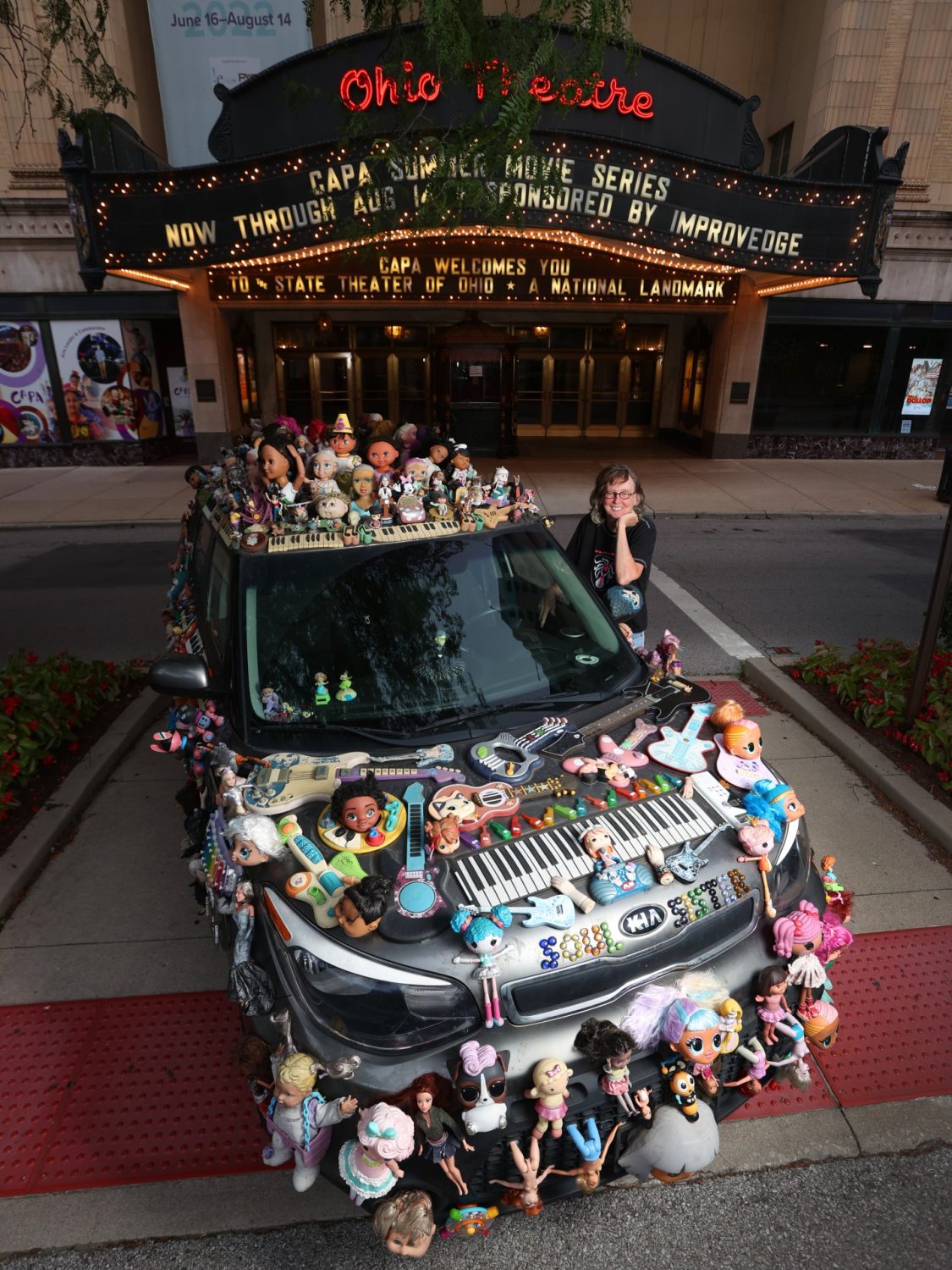
All of this does take commitment. “Artivist” (artist activist) Leah Lambert spends 24 to 36 hours turning her car into a “temporary” art car for the Doo Dah parade, with themes like “Make Tie Dye Not War” and “The Power of Positive Protest.”
“You have to really commit [to an art car]; that was the hardest part for me,” she said. “You commit your vehicle to being a statement and to people knowing that you’re making that statement. You really have to pick what embodies you. I couldn’t pick. So I just made a temporary car that could change every year.”
Maintaining a car may seem like a huge time commitment as well, but it doesn’t have to be. Phelps keeps caulk and mirror plates in the trunk of That Car (his license plate) #4 and will glue pieces on whenever he has a free moment.
“I think the biggest commitment is that just your daily going about takes longer,” Phelps said. “Going to the grocery store takes longer because people always have questions. It might be the first time they’ve ever seen a car like this. Really the commitment is, you can’t drive and be incognito anymore.”
“It makes people talk to you that never would,” Simpson said. “When you’re parked somewhere and you come out to get in your car, there’s people all around it taking pictures and asking you questions. And to me that makes it all worthwhile”.
“I’ve told people that I think anyone that tends towards depression or feeling down a lot should have an art car,” Simpson continued. “Because all you have to do is get in it and drive somewhere and park, or go through a drive through, and you get such positive feedback. It makes you feel good.”
Out in public, kids point and squeal joyfully at Phelps’ co-pilot, Dave the Skeleton. It’s surprising how many adults will wave at Dave. Passersby have left notes of gratitude on Simpson’s windshield. The cars are popular backdrops for snapshots and selfies.
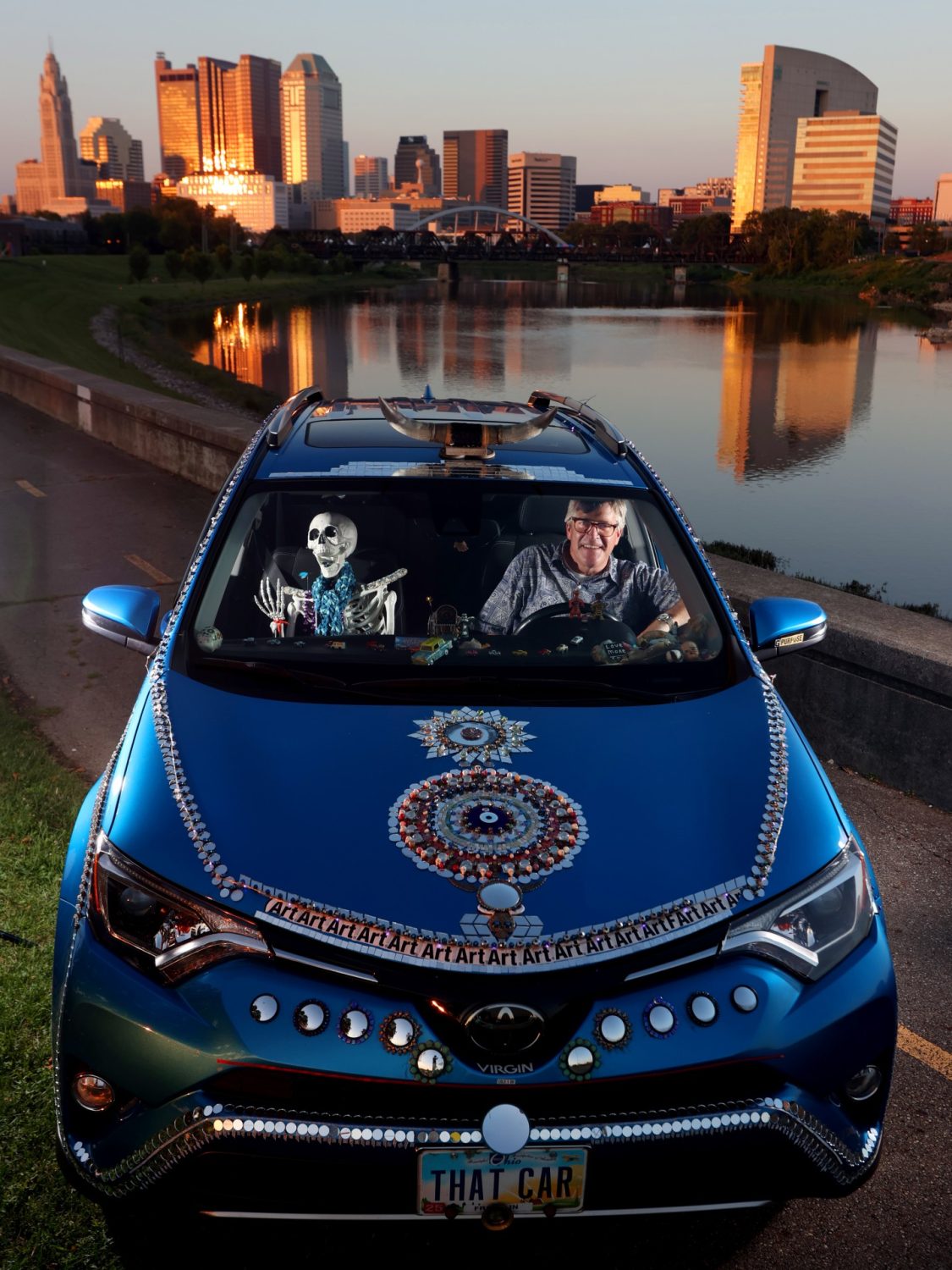
Do people try to touch the cars? They sure do. And the artists have to come to terms with that.
“If you go to other car shows, you won’t even think about touching someone’s classic car or hot rod, but people have no qualms about coming up and touching the dolls on a car,” Phelps said.
Then there’s the risk of vandalism. Silicone and bolts only go so far to protect art outdoors. Fortunately, vandalism to art cars is fairly rare, although local thieves did try to steal Simpson’s Kia Soul.
Of course, there are legal and safety considerations for art cars. The art can’t obstruct visibility, and colored lights can present safety problems. But other than that, the playing field is fairly wide open. And yes, law enforcement is just as supportive as the general public.
“Cops get bored seeing the same gray cars go by every day. They’re just people like the rest of us. They’re amused when they see an art car go by, and they know that we’re not robbing banks,” Phelps said, laughing.
“I sit around on a Saturday morning, read the paper or get really frustrated with the current news, realize I don’t have much I can do in terms of affecting big things. But I can get in my car and drive down the street, have these spontaneous interactions with people, and just create joy by driving a car.”
Interested in local art cars,? Check out a few more capture by photographer James Miller:
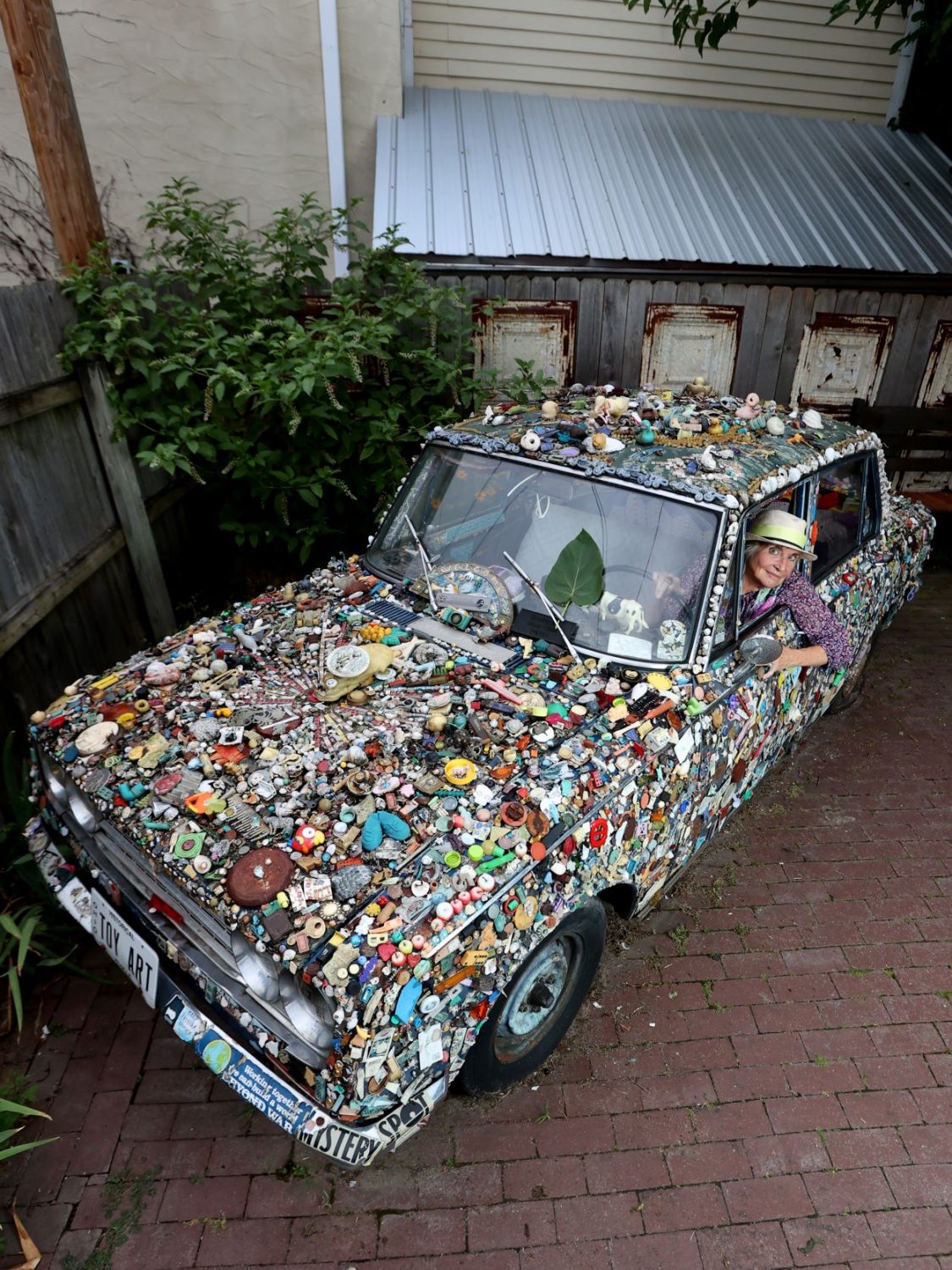
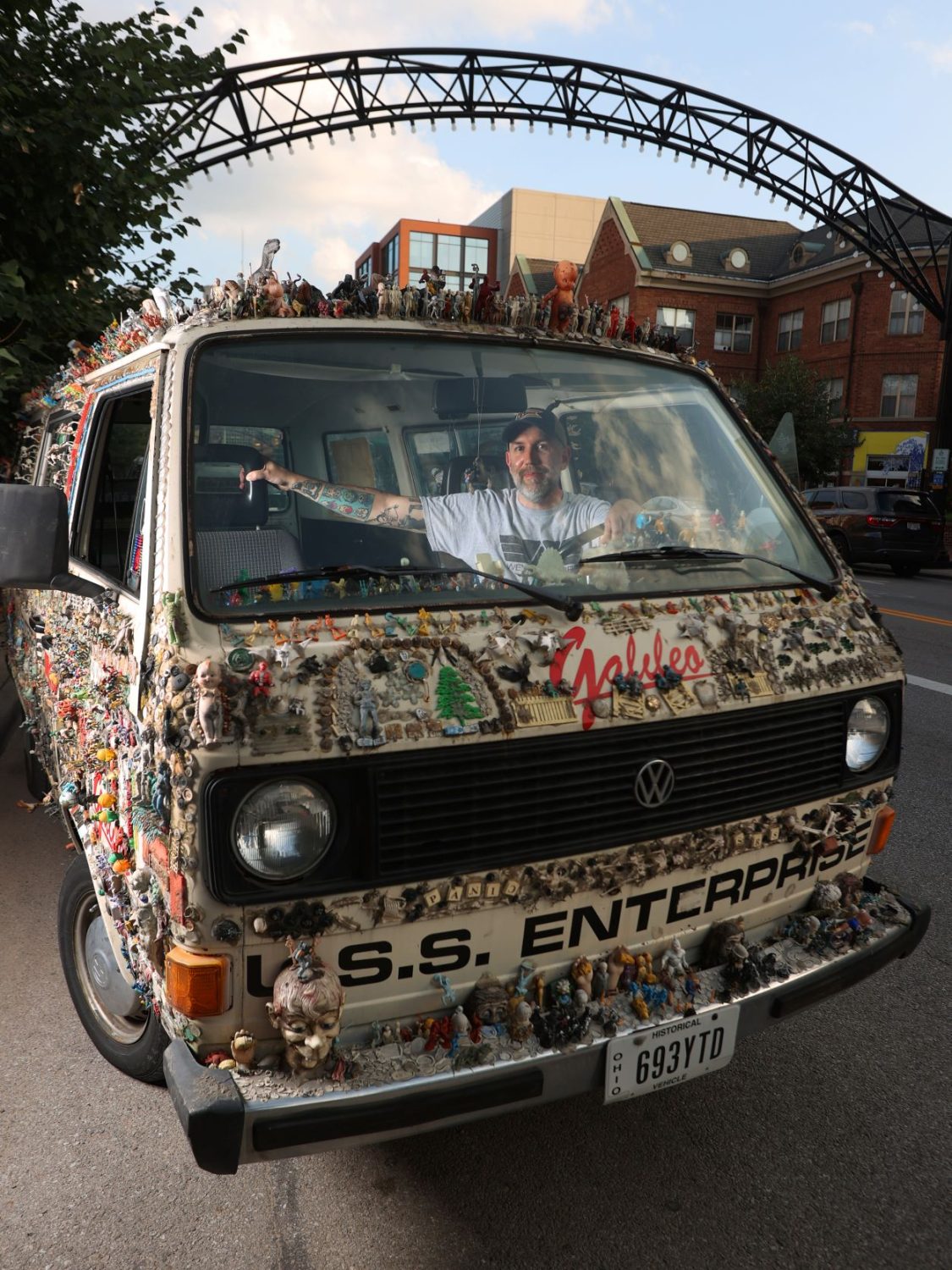
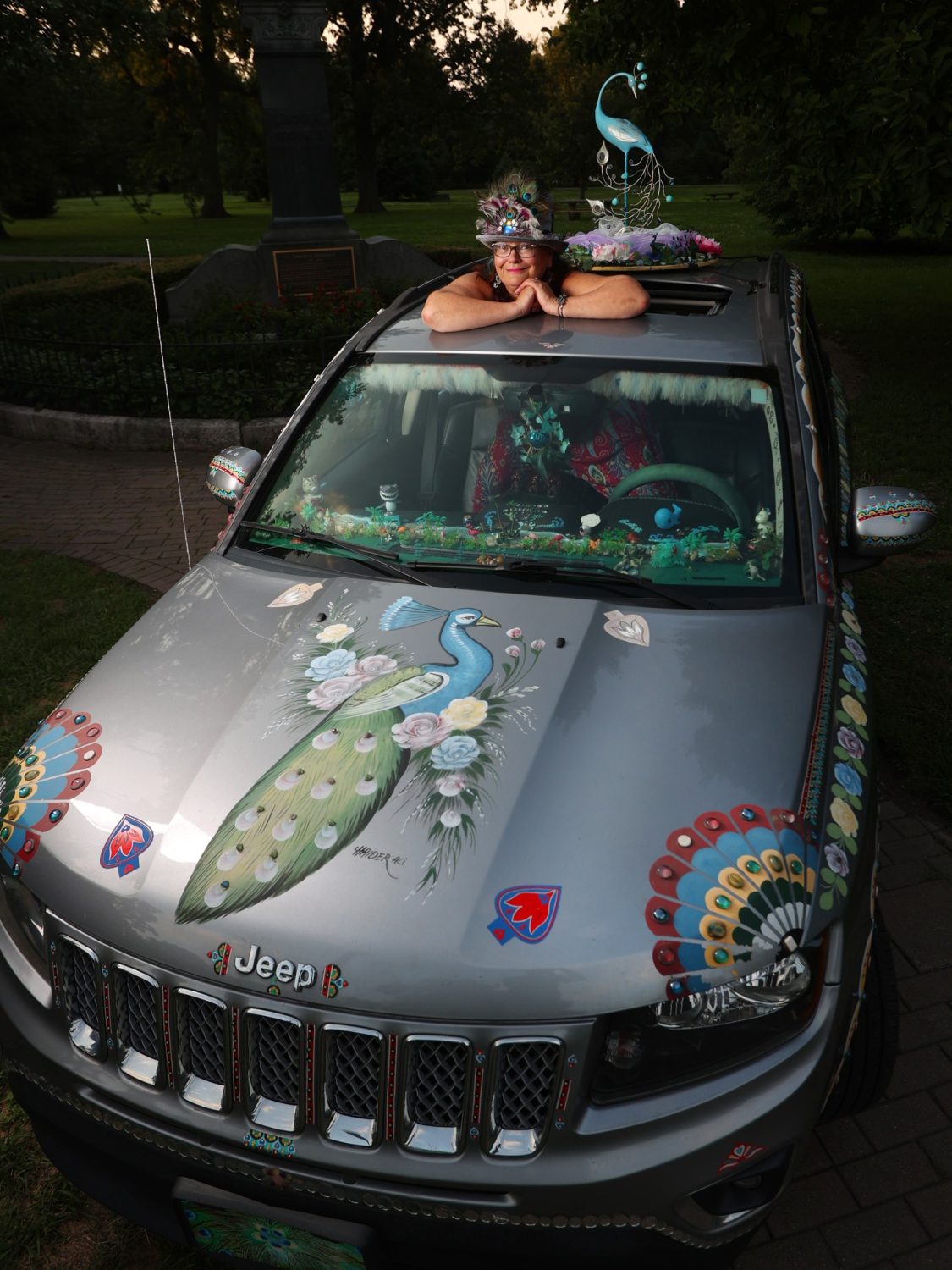
Want to read more? Check out our print publications, (614) Magazine and Stock & Barrel. Learn where you can find free copies of our newest issues here!
BROUGHT TO YOU BY




